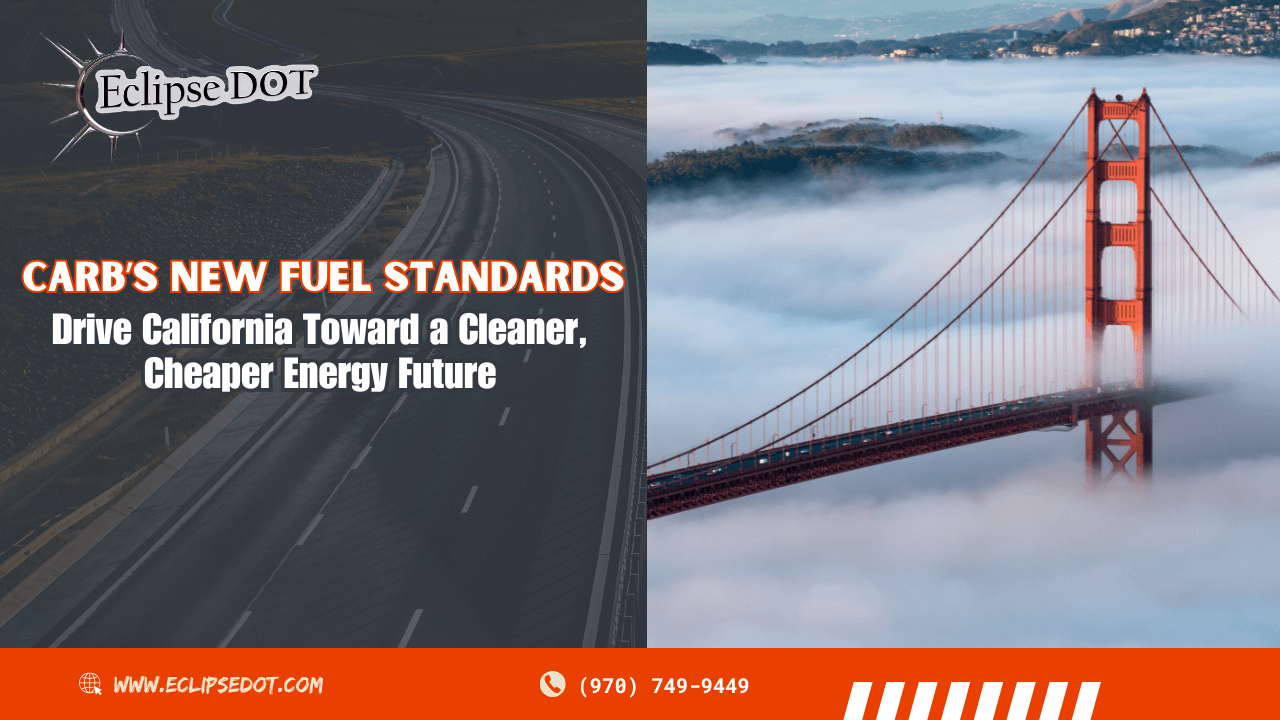Hold on to your hats, California! CARB (aka the California Air Resources Board) just cranked up the green machine, and the new Low Carbon Fuel Standard (LCFS) updates are here to clean up the air, cut down on emissions, and—if they’re lucky—save everyone a few bucks in the process. Think of it like a souped-up eco-boost for the Golden State. Approved on November 8 after a public meeting packed with enough excitement to rival a soap opera, these changes are setting California on a clear path to greener roads and healthier communities.
And with 435 RNG (that’s renewable natural gas, not “Really Nice Gas”) facilities already fueling North America, California’s got its eyes set on helping that number hit warp speed. CARB’s big vote says, “Yes, we want cleaner air and affordable fuel options, and we want it now!”
California’s Clean-Energy Supercharge
First off, CARB isn’t messing around. They’re doubling down on clean fuel with plans to slash California’s carbon intensity by 30% by 2030 and then a jaw-dropping 90% by 2045. In other words, they’re not just moving the needle—they’re trying to spin the whole dial toward zero emissions.
And they’re not just building fancy new EV stations in Silicon Valley. No, sir. CARB’s making sure clean fuel reaches every nook and cranny of California, especially for the heavy-duty trucks that keep goods moving across the state. Low-income neighborhoods, rural areas, and underserved communities are all getting in on this eco-action, making sure clean air and cleaner fuel are no longer exclusive to big cities.
Biomethane, You Say? Here’s the Deal
Let’s talk biomethane. CARB’s switching up the rules, keeping biomethane credits rolling for renewable hydrogen but phasing out its use for combustion. Why? Because they’re covering all their bases to cut emissions without leaving the door open for extra pollution. And as if that wasn’t enough, they’re putting the brakes on biofuels that come with hidden consequences. Fuel producers are now tracking where all that crop-based feedstock comes from, banning palm oil outright, and saying, “Not on our watch!” to any potential deforestation or food shortages.
What About Gas Prices?
Here’s the million-dollar question, right? “Will it cost me more at the pump?” CARB’s aware of that concern, and they’ve got a game plan. Sure, there’s a projected bump—maybe 37 cents more per gallon by 2030—but they’re aiming to keep prices in check with caps on credit costs and regular price checks. They’re partnering with the California Energy Commission to report every six months, keeping a close eye on any changes so no one gets a rude surprise at the gas station.
CARB’s stance? Green energy’s for everyone, not just those who can afford a Tesla. They’re making sure that any price increase stays reasonable, with plenty of options for Californians to go green without going broke.
RNG Coalition Cheers CARB’s Big Green Light
The renewable energy folks are pumped! The RNG Coalition gave CARB’s update a standing ovation, calling it a “powerful step forward.” Sam Wade, RNG’s policy chief, pointed out that thanks to LCFS, California has already booted 60% of its diesel supply in favor of cleaner fuels. And now, CARB’s opening the throttle on renewable energy projects that capture methane from farms, landfills, and wastewater facilities. Translation? CARB’s hitting emissions from all sides, cutting pollution, and turning waste into power.
What Does It All Mean for Californians? Clean Air, Lower Bills, and Healthier Communities
Since the LCFS launched, California’s carbon footprint has taken a serious hit. CARB’s program has already pulled off a 13% carbon reduction in California’s fuel mix, which is like taking 320 million metric tons of CO₂ out of the atmosphere. And the updates? They’re just the beginning of some sweet benefits:
- Cleaner Air and Fewer Sick Days: CARB’s projected a $5 billion savings on health care costs over the next 20 years from fewer pollution-related illnesses. Cleaner air means healthier people, less coughing, and more savings. Now that’s a win-win!
- Big Savings at the Pump: By 2045, California’s projected to save $20 billion annually in fuel expenses. For those everyday light-duty vehicles, this could cut fuel costs by over 50%. Clean fuel, less cash out of pocket? Yes, please.
- More Places to Plug In or Fill Up: The updated LCFS backs over 800 new EV charging and hydrogen fueling stations statewide. So, whether you’re in LA or a small town off the I-5, there’s green energy within easy reach.
And the best part? All of this competition and expansion means stable prices and more options for consumers. According to CARB’s math, the LCFS adds only about $0.10 per gallon—pocket change compared to what it delivers in health and fuel savings.
The Roadmap to Zero Emissions: California Leads the Charge
With these updates, CARB’s not just making waves; they’re setting the national standard. CARB Chair Liane Randolph calls it a “balanced approach to reducing environmental impacts and expanding clean energy choices.” Balanced? You bet. This update combines private investment with public benefits, aiming for cleaner air, healthier communities, and solid savings for the people.
Since LCFS kicked off, private investment has poured over $4 billion into California’s clean energy sector each year. These new updates will keep the momentum going, fueling job growth, infrastructure expansion, and a future where zero emissions aren’t just an ideal—they’re a reality.
The LCFS updates are more than policy; they’re a turning point. With CARB leading the way, California’s proving that a cleaner, more affordable energy future is possible—and the road ahead has never looked greener.
Gain exclusive access to our CDL & DOT Compliance articles with a trial at DOTDocs.com. And don’t forget to claim your FREE micro audit at THE ECLIPSE DOT MICRO AUDIT. Ready for seamless operations? Discover the difference today!


